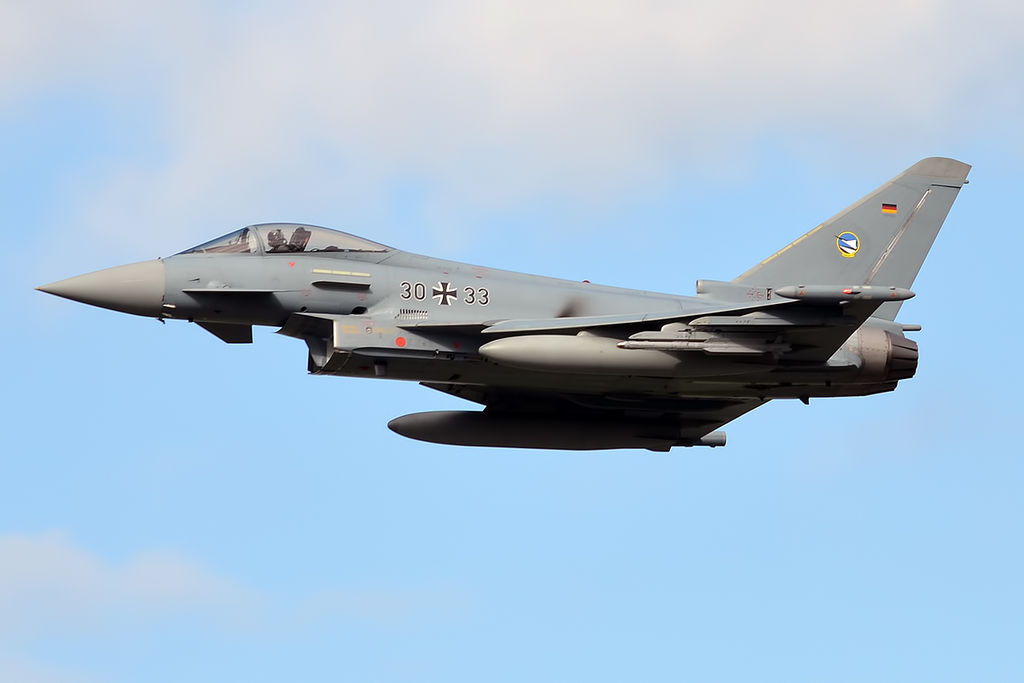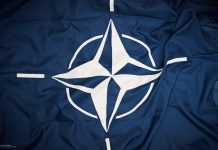
Canada is rethinking its $19 billion plan to acquire 88 Lockheed Martin F-35 Lightning II stealth fighters, a decision sparked by rising political friction with the United States during President Donald Trump’s second term in office. On March 14, 2025, Defense Minister Bill Blair revealed that Ottawa is now assessing alternative aircraft, with the Eurofighter Typhoon—built by a European consortium—emerging as a possible replacement.
This shift occurs as relations with Washington deteriorate, marked by a heated trade conflict and inflammatory comments from the Trump administration. The reconsideration carries major implications for Canada’s position in NORAD, its broader defense posture, and longstanding partnerships within NATO.
Prime Minister Mark Carney is at the helm of a pivotal defense review that could alter the Royal Canadian Air Force’s future. Political and economic pressures have converged since Trump returned to office in January 2025, including the imposition of 25% tariffs on Canadian exports and provocative statements about Canada becoming America’s “51st state.” These developments have intensified calls within Canada to reduce reliance on U.S. defense systems. Blair’s comments came shortly after his return to Carney’s cabinet, highlighting a potential new direction in defense procurement.
Canada’s review follows a similar move by Portugal to revisit its commitment to the F-35, suggesting a growing unease among American allies about depending solely on U.S. military hardware. With Canada needing to replace its aging fleet of CF-18 Hornets, in service since the 1980s, the timing is critical.
Among the alternatives, the Eurofighter Typhoon is drawing renewed interest. Jointly developed by Airbus, BAE Systems, and Leonardo, the Typhoon is a fourth-generation, twin-engine, multi-role combat aircraft capable of engaging in air superiority missions, ground strikes, and reconnaissance. First deployed in 2003, it has seen combat in operations against ISIS and recent missions in Yemen.
Powered by twin Eurojet EJ200 engines, the Typhoon can reach speeds of Mach 2 and has a combat radius of roughly 1,850 kilometers—ideal for defending Canada’s expansive Arctic regions. Its avionics suite includes the CAPTOR-E AESA radar and the Defensive Aids Sub-System (DASS), providing advanced targeting and enhanced protection from missile threats. The aircraft supports a wide range of weapons, from Meteor air-to-air missiles to Storm Shadow cruise missiles and precision-guided munitions.
Given its agility and performance, the Typhoon is well-suited for intercepting aircraft, including the Russian Su-35 fighters and Il-78 refueling aircraft that NORAD detected near Canadian airspace in February 2025. The Typhoon’s supercruise capability—sustained supersonic flight without afterburners—and twin engines offer added security during long-range Arctic operations.
While the Typhoon lacks the stealth features of fifth-generation jets like the F-35, it benefits from an established production line, with more than 600 units delivered worldwide. Compared to peers such as France’s Rafale or Sweden’s Gripen, it offers a mature logistical and industrial ecosystem. However, its visibility to radar makes it more susceptible to advanced air defense systems like Russia’s S-400 or China’s HQ-9.
The F-35, on the other hand, remains the most advanced fifth-generation aircraft on the market. The F-35A model chosen by Canada is designed for stealth, air dominance, precision targeting, and ISR (intelligence, surveillance, and reconnaissance). It features radar-absorbing materials and a shape that minimizes detection, making it ideal for penetrating contested airspace. Its advanced sensor suite, including the AN/APG-81 AESA radar and Electro-Optical Targeting System (EOTS), enables real-time battlefield awareness through data fusion.
With a top speed of Mach 1.6 and a combat radius of around 1,200 kilometers, the F-35 may be less nimble than the Typhoon, but its ability to network with other NATO and NORAD assets makes it a key component in joint military operations. It supports a range of weaponry via internal bays for stealth operations and external hardpoints for expanded payloads.
The F-35 has already been adopted by 19 nations, including close allies like the UK and Australia, reinforcing its interoperability value. However, the program’s massive $1.7 trillion lifecycle cost and a high maintenance-to-flight hour ratio have drawn criticism. Software challenges, particularly with the ALIS (Autonomic Logistics Information System), further complicate its support model.
Canada’s involvement in the F-35 program dates back to the early 2000s, with its formal selection in 2022 under Prime Minister Justin Trudeau. The finalized $19 billion contract, signed in 2023, was the largest air force investment in decades. However, long-standing concerns about cost and operational reliability never fully subsided. Airbus withdrew from the bidding process in 2019, citing favoritism toward Lockheed Martin, given Canada’s membership in the Five Eyes intelligence alliance.
The strategic consequences of moving away from the F-35 are considerable. NORAD, the U.S.-Canada joint command created in 1958, relies heavily on integrated systems and real-time data sharing. The F-35’s capabilities are designed for seamless cooperation with U.S. F-22s and F-35s—something the Typhoon cannot offer to the same extent. A mixed fleet or complete pivot to a non-U.S. platform would introduce logistical, training, and mission-planning complications.
Aerospace analyst Richard Aboulafia notes that buying the F-35 is as much about aligning with the U.S. as it is about military capability. A departure from that framework might damage defense ties, especially if perceived as a rebuke to the Trump administration.
On the economic front, Canadian firms have contributed over $1.3 billion in F-35 production since the 1990s. Companies like Magellan Aerospace and Héroux-Devtek would be affected by a cancellation, which might also incur financial penalties. However, the Eurofighter consortium has signaled openness to building the aircraft in Canada and sharing technology—potentially creating jobs and expanding domestic capabilities.
Such a move would align with Carney’s goals of diversifying trade and industry partnerships, particularly with Europe. Some European leaders see heavy reliance on U.S. weapons as a vulnerability, and Canada’s potential shift may signal a broader realignment in transatlantic defense thinking.
Still, the political risks are high. Trump’s looming tariffs—slated to begin April 2, 2025, over issues like fentanyl trafficking—have already strained relations. His remarks questioning Canada’s sovereignty have stoked nationalist sentiment. On social media, Canadians have increasingly voiced support for European-made alternatives, though the extent of this sentiment is hard to quantify.
A pivot to the Typhoon might affirm Canada’s autonomy but would likely provoke retaliation from Washington, possibly through sanctions targeting Canadian firms like Bombardier. Another concern involves software control; critics like former procurement official Alan Williams argue that the U.S. retains too much authority over F-35 systems, raising fears of potential foreign interference.
Canada’s decision could influence other nations. Portugal’s reevaluation reflects shared doubts about Washington’s reliability, though many allies remain committed to the F-35. While alternatives like the Rafale and Gripen are credible, none match the F-35’s stealth or integrated capabilities. Russia’s Su-57 has seen limited production, and China’s J-20, while advanced, remains off-limits to NATO allies.
Ultimately, Canada must choose between reaffirming its close U.S. defense alignment or pursuing greater strategic independence through European ties. The Typhoon provides operational benefits tailored to Canada’s unique geography and growing desire for diversification. Yet, the F-35’s superior capabilities and seamless integration with U.S. forces remain compelling.
This choice will shape Canada’s defense identity for decades. It may also influence how NATO countries approach military procurement in an era of shifting alliances and global uncertainty.




